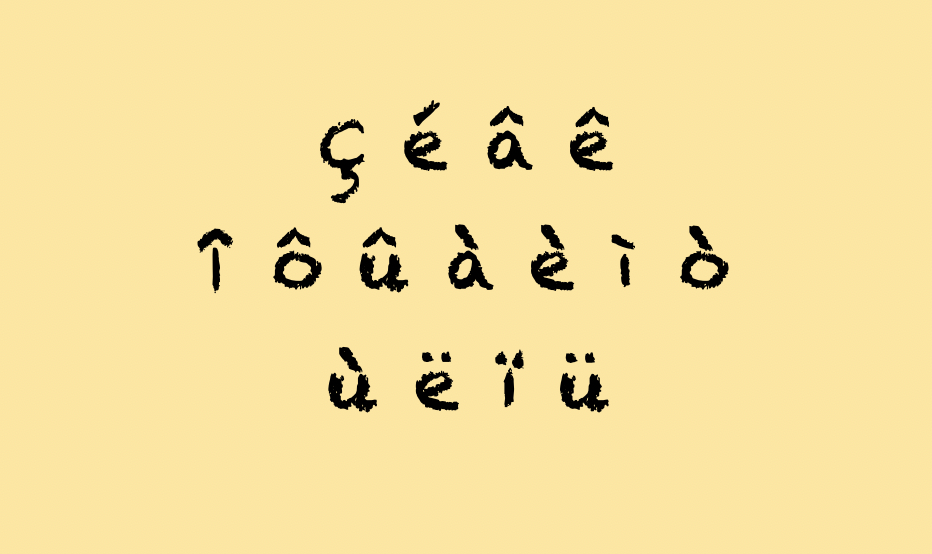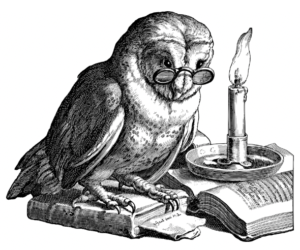French Accent Marks Made Easy
French uses the same alphabet as English. But, there’s one major difference: French accent marks. Pesky little symbols sitting on top of vowels, or dangling from certain consonants. They make spelling in French a minefield. So, if you’re learning French, you need to master these French accent marks. Learn about their names, uses, and pronunciations to become the boss of French writing.
The Five French Accent Marks
Let’s jump right into it. Luckily, there are only 5 different kinds of accent marks in French:
- ç – la cédille (the cedilla)
- é – l’accent aigu (the acute accent)
- â/ê/î/ô/û – l’accent circonflexe (the circumflex)
- à/è/ì/ò/ù – l’accent grave (the grave accent)
- ë/ï/ü – le tréma (the trema)
Notice that of these five, four are used exclusively over vowels, and only one is used with a consonant. It’s already getting simpler, isn’t it?
1. La Cédille
Let’s start with la cédille, the consonant accent. Why is a little tail dangling from “c” in French?
The purpose of la cédille is to change the pronunciation of “c”. The cedilla changes an otherwise hard “c” into a soft “c”. In English, the letter “c” makes the soft “s” sound in front of “e”, “i” and “y”, and the hard “k” sound in front of “a”, “o”, and “u”. It works the same in French. This is the only use of the cedilla and so it’s only used with “c”.
You probably already know a very common word with a cedilla, garçon (boy). Another example is the French language itself: français. France doesn’t need a cedilla because “c” comes before “e”. In français, it comes before “a”.
French uses the cedilla in their verb tenses to keep the pronunciation correct. For example, the past participle of “recevoir” is “reçu”. The “c” sounds the same in both words thanks to the cedilla.

2. L’accent Aigu
The l’accent aigu is the most common French accent mark. And, it only appears over the letter “e”. The purpose of this accent is to change the pronunciation.
While “e” without an accent can be pronounced in several ways, with the acute accent it’s pronounced “eh”. Think of the way you say the vowels in “way” and “say”, then stop before you get to the final “y” sound. Or, if you’re Canadian, simply say “eh”.
3. L’accent Grave
Don’t let the accent grave confuse you. It looks like a backward acute accent, but it works differently. It’s even more confusing when one word has both accents, such as déjà. (When you see an accent over “a” or “u” and don’t know which of the two accents to use, remember the only letter you’ll find the acute accent over is the “e”.)
The grave accent has a few different uses.
First, like the acute accent, when it appears above an “e” it’s telling you to pronounce it like the “e” in “bed”.
When the grave accent shows up over an “a” or a “u”, it’s to differentiate between two words with the same spelling, like ou (or) and où (where) and a (has) and à (to).
A nifty little memory trick to remember which direction the accent grave and accent aigu goes is to think of a grave being dug in the ground – the accent grave points down.
4. L’accent Circonflexe
It looks like a wizard’s hat sitting over a vowel, but what is that accent supposed to do? There are three main reasons why the circumflex is still used as a French accent mark:
Help with Pronunciation
In a few cases it indicates how to pronounce the vowel it’s over. “â” becomes “ah”, “ê” becomes “eh” (the same as the grave accent) and “ô” becomes “oh” (like the French pronunciation of “au”).
Separate From Other Words
It also helps distinguish between other homonyms, such as du (of the) and dû (had to do), sur (on) and sûr (sure), mur (wall), and mûr (ripe).
Indicate a Missing Letter
In many cases, the circumflex doesn’t change the pronunciation and doesn’t distinguish from other words either. Instead, it’s a remnant of the past. Take the word “forêt” for example. It looks an awful lot like the English word “forest”. You would be right in thinking the two words are related and they mean the same thing. In linguistics terms, they’re “cognates”.
Both English and French share much of their languages with Latin, so it makes sense that they have many similar words. In cases like “forest”, somewhere along the line the French stopped pronouncing the “s” in “forest”, and eventually they stopped writing it, replacing the “s” with a circumflex to show they dropped a letter. It’s like an English contraction, where the apostrophe shows that there’s (there is) a dropped letter.
Look at some other French words with the circumflex and see if you can figure out their English counterparts:
- Hôpital
- Côte
- Hôtel

5. Le Tréma
Last we have the trema. Every so often you’ll find this pair of dots over certain vowels. Although it looks like the umlaut used in Germanic languages, the trema accent is not the same thing. Its purpose is simply to tell you to pronounce consecutive vowel sounds.
Normally the French language does NOT like two vowel sounds together, and makes specific rules to combat this. Dropping the vowel of “le” and “la” in front of a noun that starts with a vowel, such as in “l’accent”, is a perfect example.
Sometimes though you just need to have that second vowel sound. That’s where the trema comes in. Most famously it’s found in “noël”. Written in English we leave off the trema (although linguists suggest that even English words should be written with a trema in cases like reëvaluate and coöperation – no one does this). In French you have to have the trema or the two (or three) vowels will only make one sound, as in “mais” (but) and “beau” (beautiful). It could be interesting here to evoke “maïs” (maize), which uses the trema to differentiate from “mais” (but).
There is one funky use for the trema, but its purpose is still to tell you to pronounce the vowel. In adjectives ending in “gu”, the feminine form is “gue”. The problem is, “gue” is pronounced just “g”, like in the English word “vague”. To remind you to pronounce the last “u” sound, we add the trema over the “u”. The adjective “aigu” (acute) becomes “aigüe”. Sometimes you see the trema over the final “e” but this is technically wrong since 1990’s French Spelling Reform. The reformed spelling is not much is use. Newspapers, magazines and most books will write “aiguë”.
Keyboard Shortcuts for Typing French Accent Marks
Writing French accent marks on paper is pretty straightforward. But, the majority of our communication nowadays happens over the internet. If you want to write an email to your French penpal or comment on something of French Reddit, you need to know how to type French accent marks. Luckily, there are some handy shortcuts and keyboard combinations to type these symbols on your devices.
Typing French Accent Marks on Mobile
On mobile devices, it’s very easy to type French accent marks. You don’t even need to switch to the French keyboard to do so. Just hold down the letter you want to add an accent to and all the special character options appear.
Typing French Accent Marks on a Computer
Depending on what kind of computer you use, there are various keyboard shortcuts you can use to type French accent marks. You can always use a French keyboard. Here’s a picture of what the French keyboard generally looks like:

But, if you’re switching between typing in French and English, it may be easier to just use the US (International) keyboard setting. Here’s an easy guide to show you how to set that up:
On Windows: Start Menu > Settings > Time & Language > Region & Language > English > Add Keyboard > United States (International).
On Mac: Settings > Keyboard > Input Sources > + > US International – PC.
Then, you can use these shortcuts to write specific accents with the US International keyboard:
Cédilla Shortcut:
- Windows: Alt + C
- Mac: Option + C
L’accent Aigu Shortcut:
- Windows: ‘ (single quote) then e
- Mac: Command + E then vowel
L’accent Circonflexe Shortcut:
- Windows: Shift + 6 then vowel
- Mac: Option + I then vowel
L’accent Grave Shortcut:
- Windows: ` (to the left of 1) then the vowel.
- Mac: Option +` (next to Shift) then vowel
Le Trema Shortcut:
- Windows: Shift + ‘ (single quote) then vowel
- Mac: Option + U then vowel
Alternately, find a complete list of accents and special characters in the symbols/emoji sections or by using “insert special character”. Windows users can use Alt + a numeric code for any symbol, but these options really aren’t convenient for more than occasional use.
Learn French Easily
You can master French accent marks very easily. But, how fast can you master the French language? The truth is, it doesn’t take long to reach French fluency. And with an amazing method like OptiLingo, that’s a guarantee.
OptiLingo is the language learning app that brings you results. It gives you the most common French words and phrases. So, you only learn the most useful expressions. Don’t waste time on unnecessary vocabulary ever again. Start speaking like a local today. And soon, you’ll be fluent in French without even noticing. Download OptiLingo, and discover how much more effective learning French can be!







